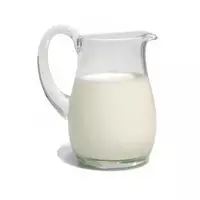Sterilized milk

In recent years, the popularity of sterilized milk has been gaining momentum. This is not strange, since compared to pasteurized milk, this product has a greater degree of resistance, withstanding long shelf life and transportation even without cooling. For example, abroad, up to 40 percent of drinking milk is consumed in sterilized form. Thanks to these properties, sterilized milk is economically profitable and convenient to use for supplying people from remote areas.
But what is the difference between sterilization and pasteurization? Basically, for the production of sterilized milk, "ultra-high-temperature treatment" is used - this is when the milk is heated to a temperature of 140 degrees for several seconds. With such heating, almost all microflora, both harmful and useful, dies. Most vitamins, polyunsaturated fatty acid lysine and cystine are destroyed. But this type of milk is stored longer: the shelf life of pasteurized milk is only 3-4 days, while sterilized milk can reach six months.
From a culinary point of view, sterilized milk is not much different from other types of this product, and its use is as diverse as cow's milk in general.
sterilized milk 63 kKal
Energy value of sterilized milk (Ratio of proteins, fats, carbohydrates - ju):
Proteins: 3 g (~ 12 kCal)
Fats: 3.5 g (~ 32 kCal)
Carbohydrates: 4.7 g (~ 19 kCal)
Energy ratio (bj | y): 19% | 50% | 30%
 Español
Español Français
Français Português
Português Русский
Русский 简体中文
简体中文 繁體中文
繁體中文 日本語
日本語 한국어
한국어 العربية
العربية Türkçe
Türkçe Қазақ
Қазақ Deutsch
Deutsch Italiano
Italiano Українська
Українська
